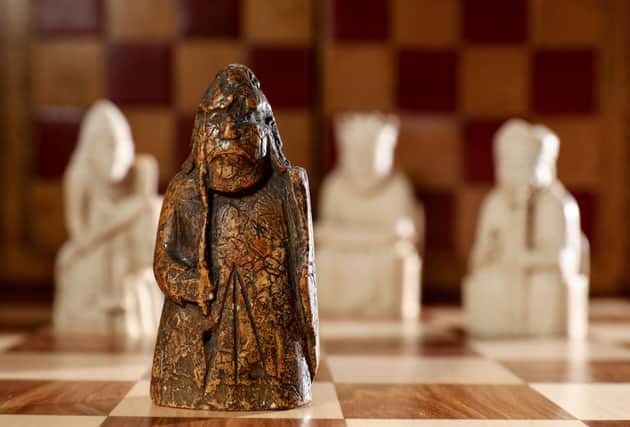Lewis Chessman could raise £1m at auction after being discovered in a family drawer


A medieval chess piece which had been missing for nearly 200 years is likely to raise £1m at an auction later today (Tuesday 2 July).
The Lewis Chessman, discovered in an Edinburgh family drawer, is part of a hoard of 93 objects discovered on the Isle of Lewis in the Outer Hebrides.
Advertisement
Hide AdAdvertisement
Hide AdSotheby’s auction house is due to sell the piece at auction on Tuesday 2 July with it predicted to sell at a whopping £1m.
Bought for a fiver
The treasure has spent the last two centuries hiding in the drawer of an Edinburgh family after their grandfather, an antiques dealer, bought the piece for just £5 in 1964.
Unaware of its significance, the 8.8cm piece of crafted walrus ivory was passed down to his family, who have looked after it for 50 years.
While the significance of the piece was not always known, the family “treasured” it, reported the BBC.
Advertisement
Hide AdAdvertisement
Hide AdThe owner’s late mother believed it “almost had magical qualitiies”.
Symbol of European civilisation
Believed to be made in Scandinavia, most likely Norway, experts call the chessmen an “important symbol of European civilisation”.
Found buried in a sand dune on the Isle of Lewis in 1831, their discovery and their origin has been shrouded in mystery.
The chessmen are among the biggest draws at the British Museum and the National Museum of Scotland in Edinburgh.
Advertisement
Hide Ad